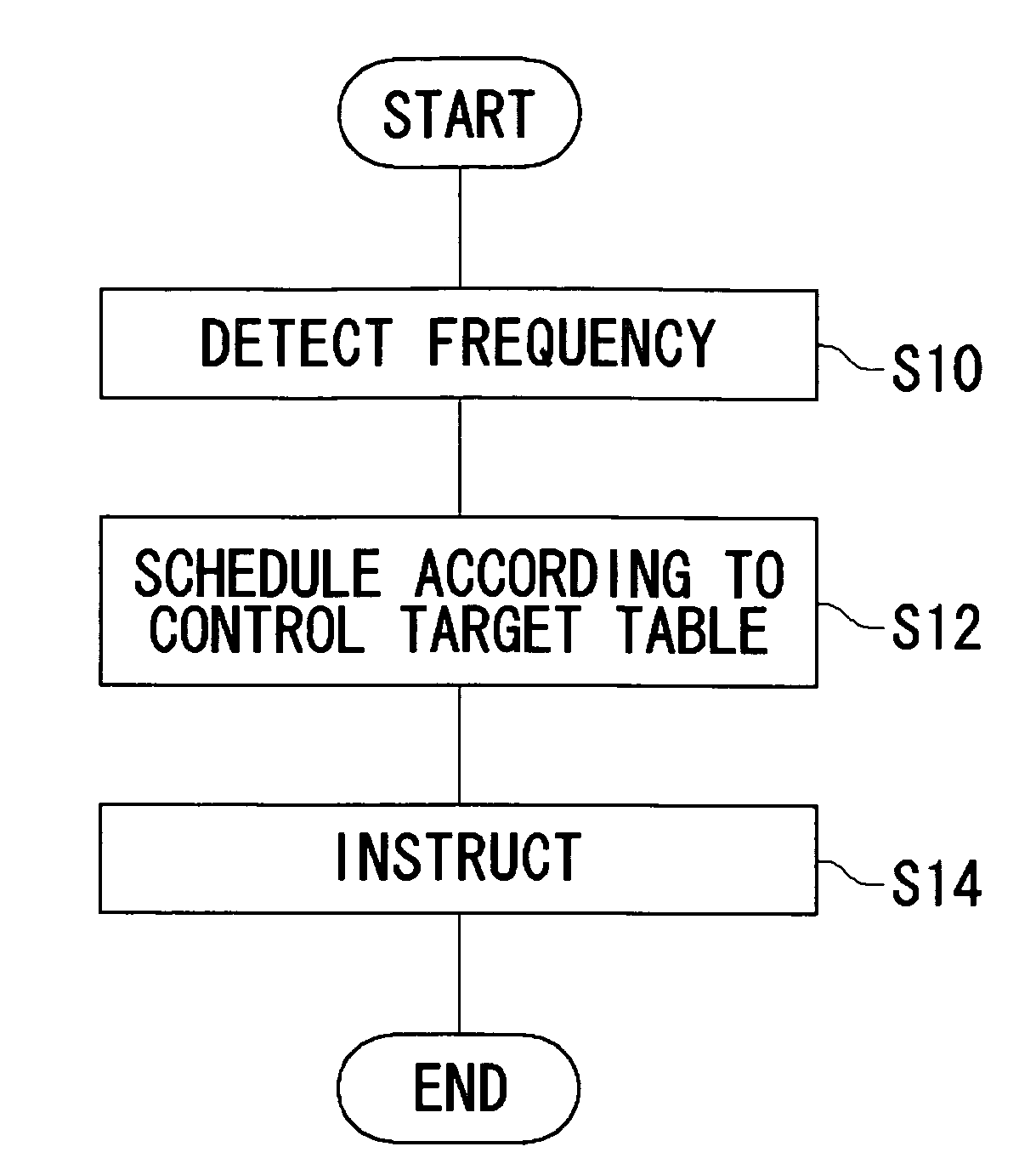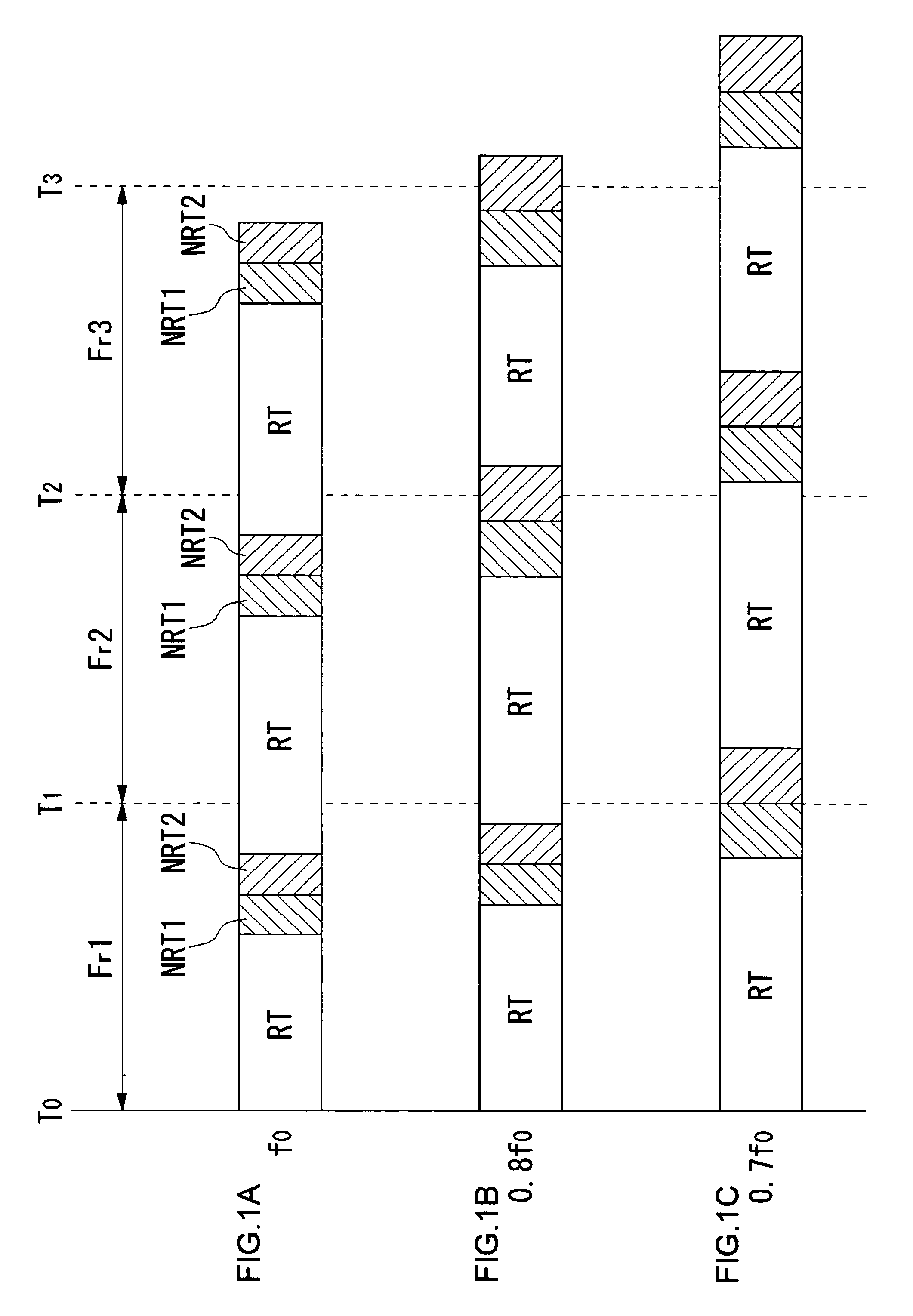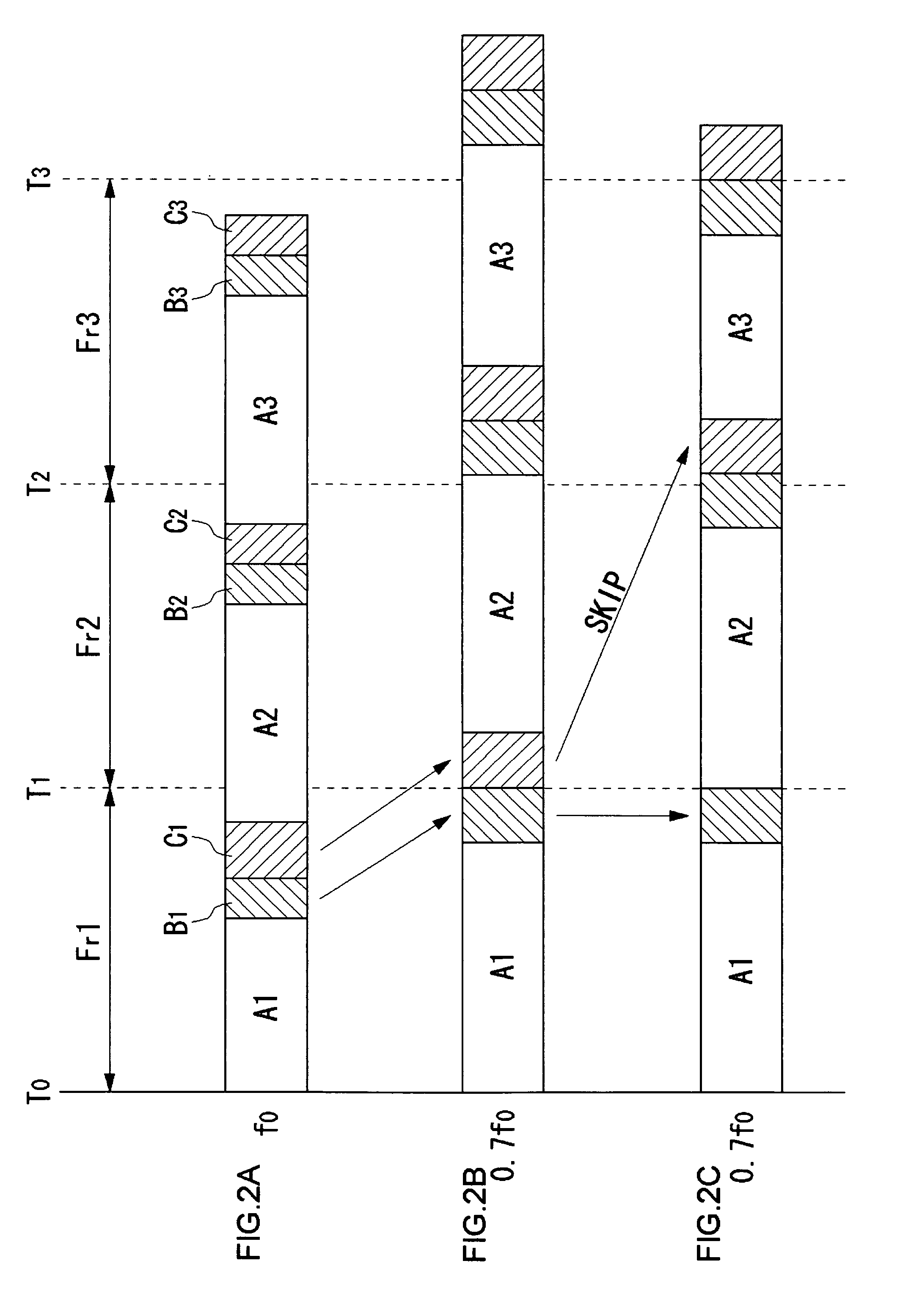Skipping non-time-critical task according to control table when operating frequency falls
a control table and task technology, applied in the field of managing tasks, can solve the problems of affecting the operation efficiency of the processor, the inability to make the failure of the chip to achieve the full use of the processor throughput, so as to reduce the operating frequency of the processor and the effect of the processor falling in throughpu
- Summary
- Abstract
- Description
- Claims
- Application Information
AI Technical Summary
Benefits of technology
Problems solved by technology
Method used
Image
Examples
embodiment 1
[0040]Embodiments 1 and 2 will deal with a non-preemptive task management, or a task management method for situations where tasks are switched autonomously. The task management method according to embodiment 1 includes dividing a unit time of processing into a reserved band for guaranteeing real-timeness and a non-reserved band not for guaranteeing real-timeness, and skipping tasks to be executed in the non-reserved band as appropriate when processor throughput falls. That is, when the operating frequency of the processor is lowered to suppress heat generation, the real-timeness of tasks to be executed in the reserved band is guaranteed at the expense of processing the tasks to be executed in the non-reserved band in a best-efforts fashion.
[0041]The “reserved band” is the number of execute cycles of the processor to be guaranteed in unit time, and has a fixed value. The “non-reserved band” is the number of execute cycles of the processor not guaranteed in unit time, and has a variab...
embodiment 2
[0070]FIG. 9 is an internal block diagram of the task management unit 150 according to embodiment 2. Embodiment 2 is one in which the control target table 160 is optimized according to the usage rate of the semiconductor integrated circuit 100. In the diagram, components having generally the same functions and operations as those of components described previously will be designated by identical reference numerals to those of the components described previously. The following description will deal chiefly with differences from the functions of the components described previously.
[0071]A processor usage rate detection unit 190 detects the usage rate of the semiconductor integrated circuit 100 of FIG. 3, for example, in every frame period. The processor usage rate detection unit 190 then outputs the usage rate to an update unit 192. The update unit 192 calculates an average usage rate over a predetermined period. Based on the average, the update unit 192 optimizes the control target t...
embodiment 3
[0075]Embodiments 3 and 4 will deal with a preemptive task management, or a task management method for situations where tasks are forcibly switched by timer interruptions. Hereinafter, a frame period will be denoted as “t”. In the task management method according to embodiment 3, non-real-time tasks are executed in a period that is allocated as a non-reserved band. Hereinafter, a period that is allocated as a reserved band will be referred to as “reserved period tr,” and a period that is allocated as a non-reserved band will be referred to as “non-reserved period tn.” If there are a plurality of non-real-time tasks, the non-reserved period tn is divided into equal parts in which the respective non-real-time tasks are executed.
[0076]FIG. 13A is a diagram showing the state of execution of tasks at an operating frequency of f0. When the operating frequency is f0, the reserved period tr is set at 0.7 t and the non-reserved period tn 0.3 t. Since there are two non-real-time tasks, the no...
PUM
 Login to View More
Login to View More Abstract
Description
Claims
Application Information
 Login to View More
Login to View More - R&D
- Intellectual Property
- Life Sciences
- Materials
- Tech Scout
- Unparalleled Data Quality
- Higher Quality Content
- 60% Fewer Hallucinations
Browse by: Latest US Patents, China's latest patents, Technical Efficacy Thesaurus, Application Domain, Technology Topic, Popular Technical Reports.
© 2025 PatSnap. All rights reserved.Legal|Privacy policy|Modern Slavery Act Transparency Statement|Sitemap|About US| Contact US: help@patsnap.com



